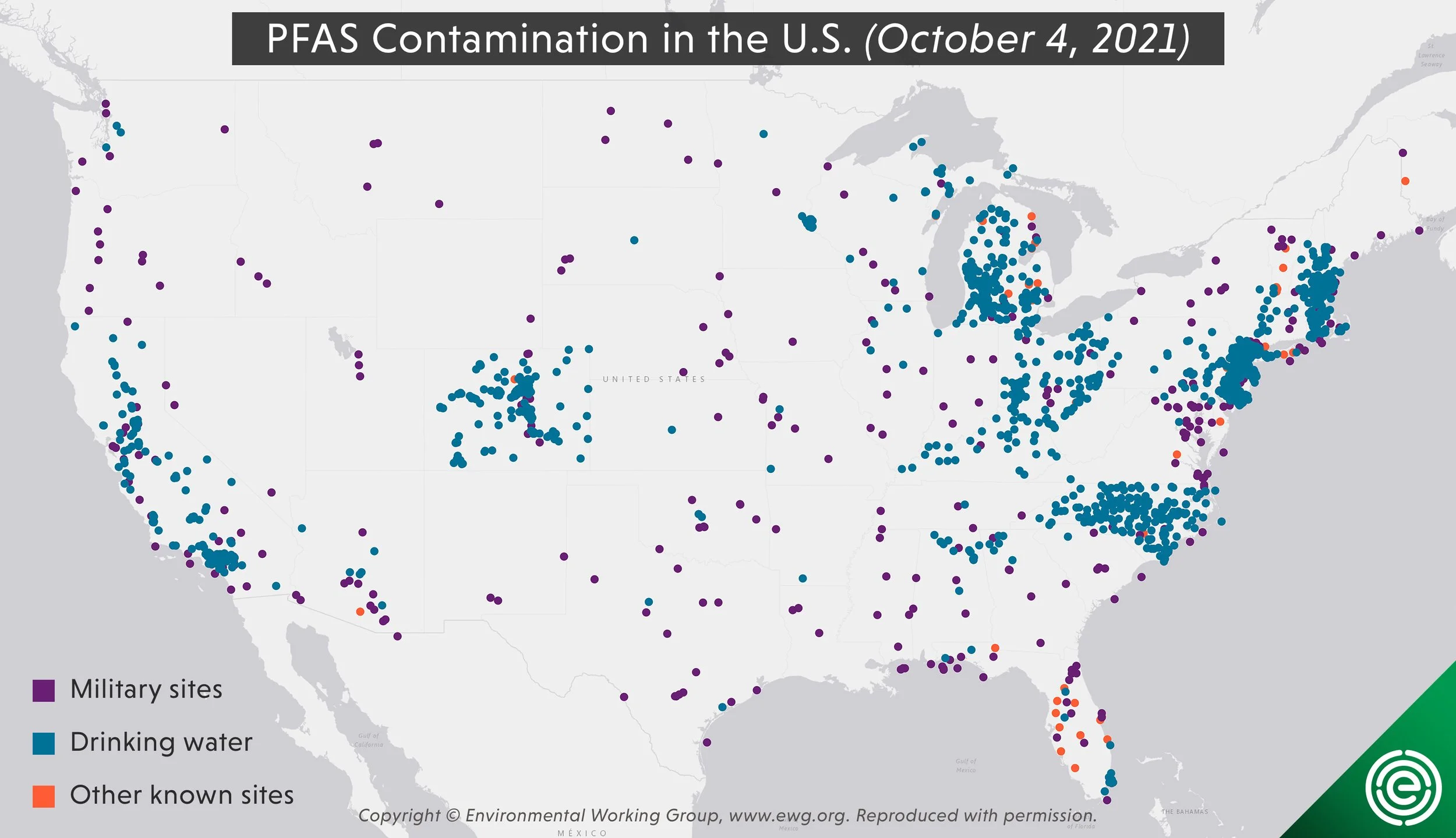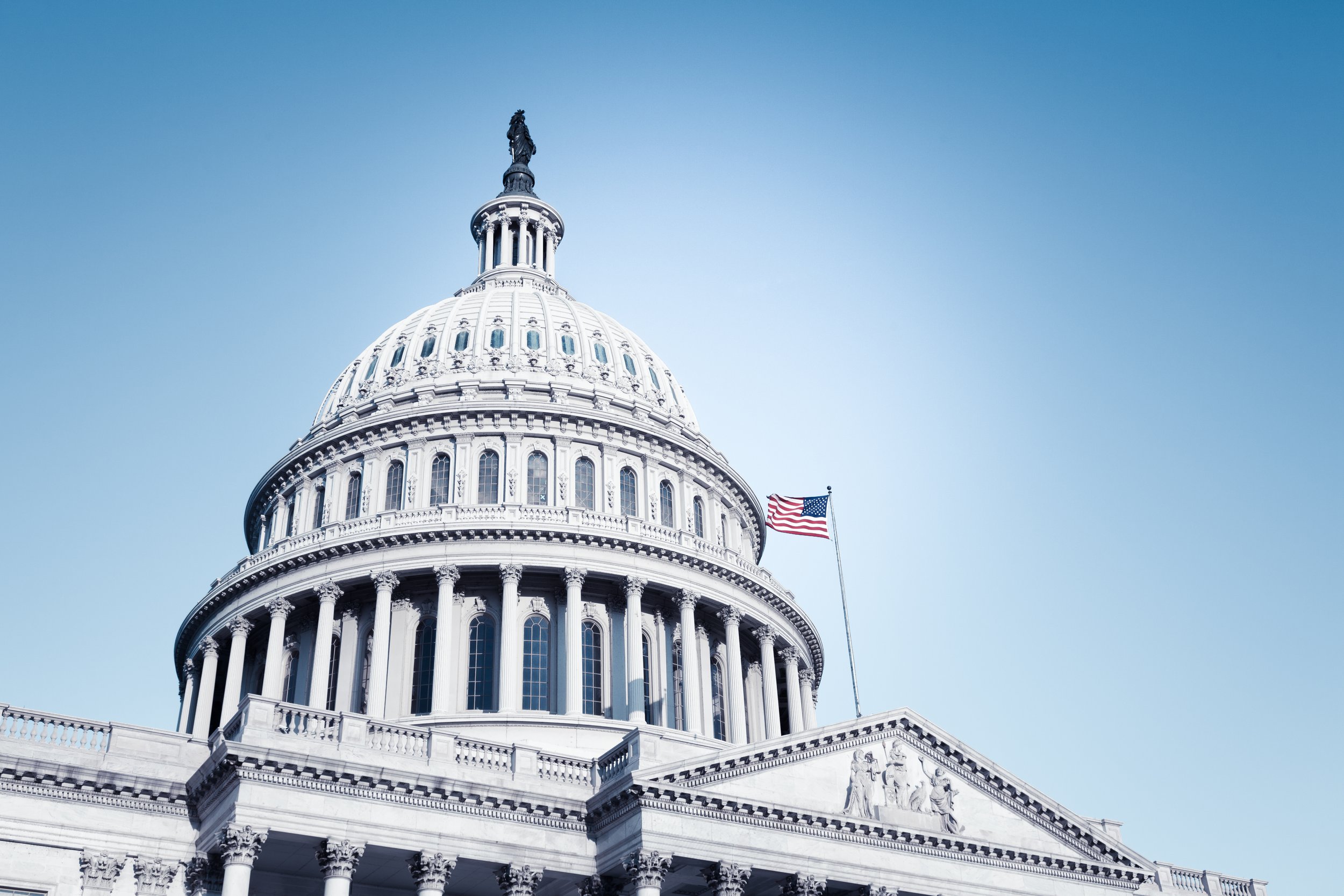Home
Safe Water, Food, and Air is a Fundamental Human Right
Families across the country are being harmed by PFAS and other toxic chemicals.
Solutions that require using safer materials, banning toxic chemicals, cleaning up existing pollution, and holding polluters accountable are already being implemented in certain states.
Voters want strong leaders who will end this public health crisis and usher in a new era of healthy communities.
Families, Farms, and Veterans Across the Nation Are Bearing the Burden of Pollution
Turning on the tap in our homes shouldn’t be dangerous. But for Laurene Allen in New Hampshire, Sandy Wynn-Stelt in Michigan, and millions of other Americans, their tap water may be making them sick.
Families living downstream from polluting facilities, like Brenda Hampton’s family in Alabama, are seeing multiple family members and neighbors diagnosed with similar diseases.
Firefighters like Walter Taylor are losing their lives to cancer, caused by chemical exposures they receive on the job.
Hunters in Maine are being warned not to eat deer because they are contaminated. Minnesota and Wisconsin have also advised their residents to limit the number of fish they eat.
Veterans, like Mark Favors and his family, drank contaminated water on and near military bases that knowingly used toxic firefighting foam and dumped polluted water into local water sources.
Farms like Songbird Farm in Maine are being forced to shut down due to polluted sludge spread on their land decades ago.
Ranchers have been notified by the state of Michigan that their beef cattle are contaminated due to polluted wastewater ending up in fertilizer.
All of these families and millions of others have had their lives disrupted by a class of chemicals called PFAS.
PFAS pollution is a public health crisis and is receiving almost daily attention from national news outlets including CNN, the New York Times, The Hill, ABC News, Fox News, and the Washington Post.
What Are PFAS?
Environmental Working Group’s data map shows 2,854 PFAS contaminated sites in 50 states and two territories
PFAS (per- and polyfluorinated alkyl substances) are a class of more than 12,000+ chemicals used to make products resist grease, oil, water, or heat. They are commonly used in cookware, cosmetics, food packaging, outdoor apparel, carpets, and firefighting foams among thousands of other products. PFAS are also widely used in industrial processes and then discharged into waterways.
PFAS are known as “forever chemicals” because they don’t break down in the environment.
PFAS have been linked to serious health problems such as cancer, hormone disruption, immune suppression, and reproductive problems.
Scientists are concerned about how exposure to PFAS and other toxic chemicals can worsen the impacts of COVID-19.
PFAS travel far distances: one recent study found 60 tons of PFAS in the Arctic Ocean. Another recent study found that crashing waves create a “boomerang effect” with toxic PFAS re-emitted to air, transported long distances, and then deposited back onto land.
Scientists estimate that over 200 million Americans, more than 60% of the country’s population, are drinking water contaminated with PFAS. Nearly every American has PFAS in their body. They are found in blood, breast milk, and even umbilical cord blood of newborn babies.
More than 2,800 sites in all 50 states are contaminated by PFAS and some states are now warning people not to eat fish and wildlife due to PFAS contamination.
States and localities are spending hundreds of millions of dollars on cleaning up PFAS pollution in their communities and providing safe drinking water for their residents. At the same time PFAS manufacturers, 3M and Dupont (now Chemours) are experiencing record profits.
Scientists from around the world are calling on governments to eliminate the entire class of PFAS where possible due to the significant human health and environmental impacts.
A 2022 UN Human Rights Commission report urged countries to ban all uses of PFAS.
In August 2022, the EPA issued a proposal to designate two of the oldest and worst PFAS as hazardous substances under the nation’s Superfund law.
PFAS are Just the Tip of the Iceberg
PFAS are far from the only class of chemicals threatening public health.
A recent report revealed that chemical pollution has crossed a planetary boundary, the point at which human changes push the earth past a stable environment.
Plastics are inherently toxic and not only contain harmful plastic additives but they also absorb pollutants from the environment including PCBs.
Plasticizers like phthalates and bisphenols have been linked to infertility, cancer and developmental harm yet are ubiquitous in plastics, building materials, food packaging, and even food.
A 2021 study found more than 10,000 substances are used in the production of plastics, with over 2,400 being substances of concern.
Toxic flame retardants are still commonly used in electronics and building insulation despite evidence of neurodevelopmental harm caused by these chemicals and questions about whether they provide true fire safety benefits.
Industrial solvents and solvents in common household items pollute the air we breathe and water we drink, even killing some who use them.
Cancer is a leading cause of death among firefighters due to the high number of chemicals they are routinely exposed to.
Current rising global trends of chemical industry production.
Environmental Science & Technology 2022 56 (3), 1510-1521 DOI: 10.1021/acs.est.1c04158
Chemicals are being produced and released into the environment at a pace that is not safe for the planet or public health.
Chemical and Plastic Production are Accelerating Climate Change…
The modern petrochemical industry is the third-largest industrial source of greenhouse gasses. The industry accounts for 30% of global industrial energy demand and generates 1.5 Gt of carbon dioxide every year, accounting for 7% of global greenhouse gas emissions.
As the market for renewable energy grows, and companies see the future of burning fossil fuels dim due to increasing concerns over climate change, the oil industry is boosting its production of chemicals and plastics.
The domestic plastics and petrochemical build out is increasing pollution in already unjustly impacted communities such as Louisiana’s infamous “Cancer Alley,” home to more than 150 industrial facilities and refineries.
…and Climate Change is Exacerbating Threats from Toxic Chemicals
AP Photo David J. Phillip
Catastrophic hurricanes and fires can result in the release of toxic chemicals into the air when homes burn, or as factories in the Gulf region are damaged or destroyed. These events are becoming more and more frequent and will continue to expose people and the planet to highly concentrated chemical doses.
Across the United States, over 12,000 high-risk chemical facilities put 39% of the US population (124 million people) who live within three miles of these sites at constant risk of a chemical disaster. According to a recent GAO Report, more than 3,200 sites are in areas prone to natural disasters including flood, wildfire, and sea level rise.
Communities and firefighters across the west are exposed to toxic smoke every summer and fall due to dangerous wildfires burning not only trees and brush but also buildings built with plastic and products containing harmful chemicals.
Solutions
State and federal lawmakers face huge challenges to the chemical pollution crisis and local lawmakers are on the front lines bearing the cost and burden of cleaning up pollution. Fortunately, the solutions necessary to address these challenges are already starting to be implemented in states and cities. Some retailers and manufacturers have adopted policies to eliminate PFAS from their products and move toward safer materials and chemistries. Adopting these initiatives will lead to a safer and healthier world for everyone.
Stop using toxic chemicals and start using safer materials. With the knowledge about harm and the increasing availability of safer solutions, there is little reason to continue using harmful chemicals.
Ban toxic chemicals and incentivize using safer materials. Multiple states have stepped up to ban the use of PFAS and other harmful chemicals in consumer products, including in cosmetics, food packaging, textiles, and firefighting foam. States like Maine, California, and Washington have adopted broad frameworks to eliminate the use of toxic chemicals and identify safer materials and chemistries. As states adopt these policies, manufacturers and retailers are moving to safer solutions.
Require agencies to regulate entire classes of chemicals. There are over 9,000 PFAS that are currently known and dozens of different types of plasticizers like phthalates and bisphenols. We will never solve this crisis with a whack-a-mole approach of regulating one chemical at a time. Federal and state agencies must follow the state's approach and regulate entire classes of chemicals to help prevent regrettable substitution.
Promote non-toxic reuse instead of toxic plastics. Policies that ban single-use plastics and promote non-toxic reuse and refill are critical to solving our plastic and toxics crisis and ensuring that we move to real solutions. We must also move away from using plastics (especially PVC, polystyrene, and polycarbonate, which are the most toxic) and towards sustainable, non-toxic materials for all uses ranging from packaging to building materials. Lawmakers must reject false solutions such as so-called “chemical recycling” which will only increases toxic pollution in fenceline communities.
Empower the public, retailers, and regulators with information and resources. We can’t clean up what we don’t know is there. Manufacturers and users of harmful chemicals need to be transparent about their use and discharge of toxic chemicals.
Require chemical and material transparency for products. Most consumers have no idea what kinds of chemicals are in the products they use. Laws are needed requiring manufacturers to disclose their product ingredients to the public, retailers, and regulators. Some states including Maine, New York, and California already require ingredient transparency in certain products and even the federal government requires disclosure of many ingredients in cosmetics but more needs to be done.
Fully Fund EPA and other state and federal regulatory agencies. The scale of the PFAS crisis is enormous and the regulatory response needs to be robust. Unfortunately, the EPA has been tasked with protecting the public from pollution but, adjusted for inflation, their budget is at the lowest it has been since 1979. Some states are also starving their regulators from resources. State and federal agencies should receive the necessary funding to address the PFAS and toxic pollution crisis.
Strengthen requirements for manufacturers to disclose use of PFAS and harmful chemicals. The current federal law governing toxic reporting, the Toxic Releases Inventory, is riddled with loopholes. Advocates and communities are pushing for state and federal policies that require more companies to report on the manufacture and use of harmful chemicals that end up in people’s bodies, communities, and the environment.
Clean it up. There is widespread contamination of drinking water, surface water, groundwater, soil, and sludge by PFAS and other toxic chemicals which is incredibly challenging and expensive to clean up. It is only fair that the chemical manufacturers and users who pollute national resources should bear the burden of cleaning up their mess.
Make polluters pay. For too long, taxpayers and ratepayers have borne the burden of paying to clean up pollution. Polluters who manufactured, used, and dumped harmful chemicals should be required to pay to clean up contaminated water, air, and soil. They should also be required to compensate communities for the harm they have caused.
Require testing and set standards. In order to create a clear picture of the scope of our chemical contamination problems, we need widespread testing of water, food, and air, as well as wild food sources such as deer and fish. This will enable federal and state officials to set health-protective drinking water standards, issue appropriate fish consumption advisories, and create other programs that will safeguard vulnerable communities.
Deliver resources for community cleanup. Toxic chemical contamination must be remediated immediately. Federal and state governments should find resources to eliminate pollution in the environment, while also adopting policies that make it easier to hold polluters accountable for the cost of contamination.







